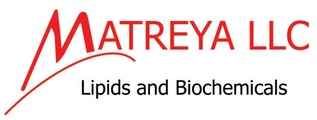      |

 通过认证 [诚信档案]
通过认证 [诚信档案]

| Cat. Number |
1400
|
| Chemical Name |
1,2-Diheptadecanoyl-sn-glycero-3-phosphorylcholine
|
| CAS Number |
70897-27-7
|
| Mol. Formula |
C42H84NO8P
|
| Mol. Weight |
762
|
| Qty 1 |
50mg
|
| Appearance |
solid
|
| Application Notes |
98+%,TLC; identity confirmed by MS
|
| Synonym |
DHDPC,
|
| Solubility |
methylene chloride, methanol
|
| Storage condition |
-20℃
|
| References |
Application Notes: This product is a well-defined, high purity, phosphatidylcholine (PC) acylated with two heptadecanoic acids. Due to the unnatural fatty acids this product is ideal as a standard and for biological studies. PC is a major component of biological membranes, especially in the outer leaflet, often composing almost 50% of the total phospholipids.1 It is a vital component in membrane bilayers and is the main phospholipid circulating in plasma. PC plays an important role in membrane-mediated cell signaling by generating diacylglycerols and phospholipids.2 Phospholipase D is an enzyme that cleaves off the choline head group, converting PC to phosphatidic acid, while phospholipase C cleaves off the phosphate group leaving diacylglycerol. PC is the biosynthetic precursor of sphingomyelin, phosphatidylethanolamine, lyso-phosphatidylcholine, and platelet-activating factor. The choline headgroup is an essential nutrient in animals although it can be synthesized by methylating phosphatidylethanolamine to phosphatidylcholine and then cleaving the headgroup with phospholipase D.3 Tumor cells appear to have increased synthesis of PC and this may be a potential target for cancer therapy. Another function of PC is the activation of enzymes such as the enzyme 3-hydroxybutyrate dehydrogenase which must be bound to phosphatidylcholine before it can function optimally.
References: |